Review: Udacity Data Analyst Nanodegree Program
 freeCodeCamp
freeCodeCamp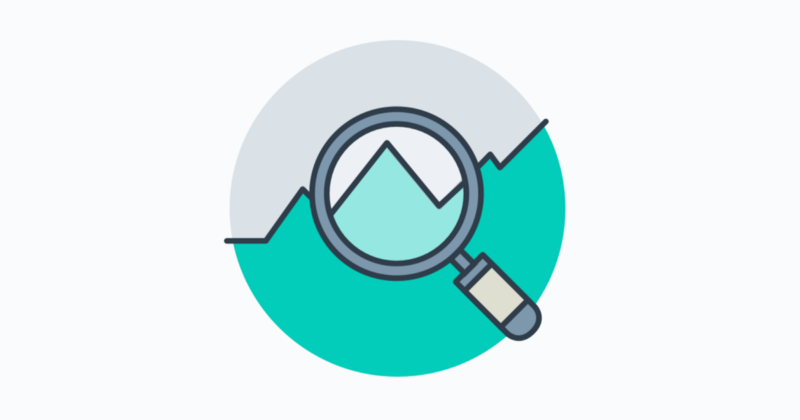
By David Venturi
Udacity’s Data Analyst Nanodegree program was one of the first online data science programs in the online education revolution. It aims to “ensure you master the exact skills necessary to build a career in data science.” Does it accomplish its goal? Is it the best option available?
I completed the program in Fall 2016. Using inspiration from Class Central’s open-source review template, here is my review for Udacity’s Data Analyst Nanodegree program.
UPDATE: The Data Analyst Nanodegree program was refreshed with new content and student services in September 2017. Details here. I was also brought on board to help recreate some of this new content. The majority of this review is unchanged. Factual updates are indicated by italic font.
Background information
What made me decide to take this program?
In early 2016, I started creating my own data science master’s program using online resources. (You can read about that here.) I enrolled in the Data Analyst Nanodegree program for a few reasons:
- I wanted a guide for my introduction to data science.
- I wanted a cohesive program instead of individual courses from a variety of providers.
- It received stellar reviews.
- I had taken a few Udacity courses before and I was a fan of their teaching style.
What were my goals?
Though the program can act as a bridge to a job (more on that later), I wanted to use the program as an introduction to more advanced material. This “more advanced material” applies to both subjects that are covered in the program and subjects that aren’t.
What is a Udacity Nanodegree program?
Udacity is one of the leading online education providers. Sebastian Thrun, ex-Stanford professor and Google X founder, founded the company and focuses on innovation at Udacity as president and chairman. Vish Makhijani is CEO.
Nanodegree programs are online credentials provided by Udacity. They are compilations of Udacity courses (some available for free, others not) that have projects attached to them, which are reviewed by Udacity’s paid project reviewers. They also come with a bunch of student services.
Slack is used as a community tool, where Udacity students can interact with other students as well as their program’s instructors and other Udacity staff. In most programs, students have assigned mentors and communicate with them through a private chat channel that is always available in the Udacity classroom.
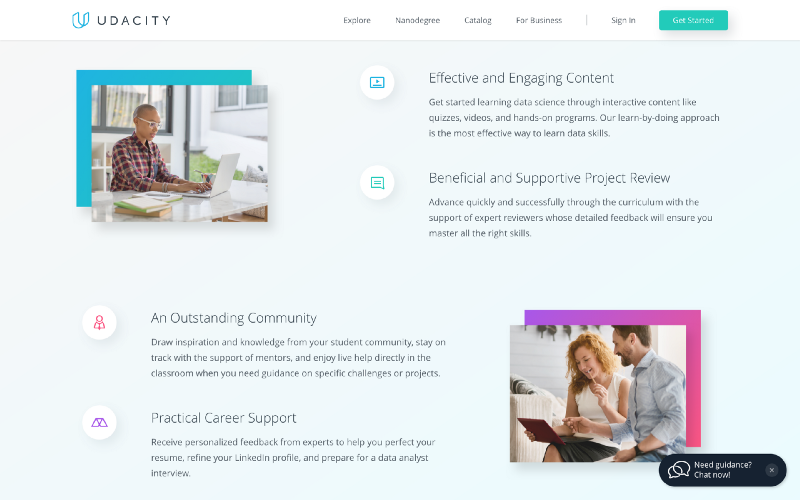 “Why Take The Data Analyst Nanodegree Program?”
“Why Take The Data Analyst Nanodegree Program?”
The Data Analyst Nanodegree program was originally released in 2014. It was Udacity’s second Nanodegree program. Though it has undergone some changes over the years, the core of the program is intact.
Who are the instructors and what are their backgrounds?
Because the Data Analyst Nanodegree program is a compilation of Udacity courses (again, some free, others not), there are several instructors. Their resumes often include prestigious roles in major tech companies and degrees from top U.S. schools.
They aren’t “instructors” per se, but Udacity’s project reviewers, mentors, and student experience staff (who monitor Slack along with instructors) are among the people you interact with the most. They are so, so helpful. More on that later.
Cost
The program is split into two terms. The first term costs $499 USD. The second term costs $699 USD. If you have a strong grasp on the skills taught in the first term, you can skip it, complete the second term only, and still obtain the credential.
Recommended prerequisites
For Term 1, Udacity recommends that students are familiar with descriptive statistics and have some experience working with data in spreadsheets or SQL.
For Term 2, students should have experience analyzing data using Python, as well as a solid understanding of inferential statistics and its applications.
My background / skills entering the program
I started the program in May 2016 when I had a few months of programming experience, mostly in C and Python. The vast majority of this experience was from the bridging module for my data science master’s program, where I took Harvard’s CS50: Introduction to Computer Science and Udacity’s Intro to Programming Nanodegree program.
I had also finished my undergraduate chemical engineering program and had 24 months of quant-related job experience. This meant I had taken several statistics courses and was comfortable with data.
 Udacity promo material
Udacity promo material
The Program
Structure
The Data Analyst Nanodegree program is split up into two terms. Each term has three courses and four projects (the extra project being an intro project that helps you get used to the Udacity learning environment). Mat Leonard, the program’s curriculum lead at the time of the refresh, is present throughout the program as he introduces each course, its purpose in the program, and its instructor(s).
Course content is made up of a combination of videos, text, and quizzes. Videos tend to range from 30 seconds to five minutes, as per Udacity’s style. Automatically graded quizzes often follow these short videos. These quizzes are usually multiple choice, fill-in-the-blank, or small programming tasks. After acquiring CloudLabs, these programming tasks are now carried out in Jupyter Notebook and SQL coding environments in the Udacity classroom.
Again, each section has a graded project. These projects and the feedback from Udacity’s paid project reviewers are where a lot of the value lies for students.
Syllabus
My edition of the program had seven parts:
- P1: Descriptive and Inferential Statistics
- P2: Intro to Data Analysis (with NumPy and pandas)
- P3: Data Wrangling with MongoDB (or SQL)
- P4: Exploratory Data Analysis (with R)
- P5: Intro to Machine Learning
- P6: Data Visualization with D3.js
- P7: Design an A/B Test
The new program’s first term is called Data Analysis with Python and SQL. The courses and projects include:
- Intro project: Explore Weather Trends. SQL and spreadsheets (or Python/R if you are already familiar) are used to analyze and visualize temperature data.
- Course: Introduction to Python. Project: Explore US Bikeshare Data.
- Course: Introduction to Data Analysis, which includes The Data Analysis Process and SQL for Data Analysis. Project: Investigate a Dataset.
- Course: Practical Statistics. Project: Analyze A/B Test Results.
The second term is called Advanced Data Analysis. The courses and projects include:
- Intro project: Test a Perceptual Phenomenon. Compute descriptive statistics and perform a statistical test on a dataset based on a psychological phenomenon called the Stroop Effect.
- Course: Data Wrangling (with Python). Project: Wrangle and Analyze Data. This is the course and project that I created. ?
- Course: Exploratory Data Analysis (with R). Project: Explore and Summarize Data.
- Course: Data Storytelling (with Tableau). Project: Create a Tableau Story.
The big changes, with full details described in this blog post:
- Python is now taught in the program.
- Machine Learning and A/B Testing are now included as optional material and are no longer requirements to graduate from the program. Reasoning: “The focus of this program is to prepare you for data analyst jobs. Our research shows that machine learning is not a requirement for the vast majority of data analyst positions.” The basics of A/B testing are now covered in the new practical stats course, giving students the exposure that they’ll need on the job.
- New courses and projects. Specifically, Intro to Data Analysis (which includes Python for Data Analysis and SQL for Data Analysis), Practical Statistics (taught by Sebastian Thrun), and Data Wrangling.
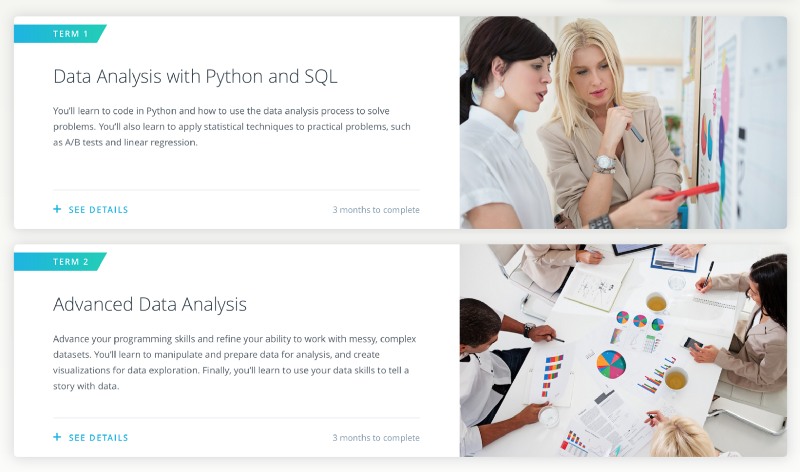 Term 1 and Term 2 of the Udacity Data Analyst Nanodegree program
Term 1 and Term 2 of the Udacity Data Analyst Nanodegree program
Grading
Projects are graded on a pass/fail (officially, “meets specifications” and “requires changes”) basis according to a unique rubric. Your project must satisfy all sections of the rubric. If all of your projects meet specifications, you graduate. This means that the automatically-graded quizzes do not count towards your grade.
If a project submission requires changes, your project reviewer will give you actionable feedback. After you implement these changes, you can resubmit. There is no submission limit.
My experience
Timeline
Udacity’s estimated timeline for the Data Analyst Nanodegree program was 378 hours when I started, which meant students took 6–7 months on average to complete it. According to Toggl (a time tracking app), the whole program took me 369 hours over five months. This timeline included dedicating serious time to making my projects portfolio-quality, as opposed to producing the minimum to satisfy the pass/fail rubric.
The program was condensed in the Fall 2017 refresh. The new estimated timeline is 260 hours. Each term is paced at 10 hours per week over 13 weeks, though students are given 19 weeks to complete each term.
How was the course content?
For my edition of the program, the course content from P1 (Statistics), P2 (Intro to Data Analysis), P4 (Exploratory Data Analysis), P5 (Machine Learning), and P7 (A/B Testing) get five stars out of five from me. P3 (Data Wrangling) and P6 get three-and-a-half stars.
The exploratory data analysis content with Facebook employees (P4) was so illuminating. The intro to machine learning course with Sebastian Thrun and Katie Malone (P5) was the most fun I’ve had in any online course. The A/B testing content with Google employees (P7) is so unique. I’d give those three courses six stars if I could.
The SQL and Data Wrangling content (P3) weren’t amazing. Same with the data visualization content (P6), though that probably was because D3.js is super difficult to teach to JavaScript newbies. These opinions aren’t uncommon, according to the Class Central’s reviews for those courses. Check them out here and here.
This “not amazing” content from the old program was removed in the Fall 2017 refresh. Revamped content for intro to data analysis, SQL, statistics, data wrangling, and data visualization is now included. The Practical Statistics content focuses on inferential statistics, with descriptive statistics being a prerequisite and taught in the Data Foundations Nanodegree program. The data visualization course is now taught with Tableau instead of D3.js.
How were the projects?
Again, projects are where Udacity sets themselves apart from the rest of the online education platforms. They invest in their project review process and it pays off. The Data Analyst Nanodegree program was no exception.
All of the projects reinforce the content you learned in the videos. The project reviewers know their stuff. They tell you where you succeeded and where your mistakes and/or omissions are. Supervised learning by doing. It works.
The forums and the forum mentors are especially helpful when you get stuck. Search the forums to see if your problem is a common one (they usually are). No luck? Post a new question yourself. There is one forum mentor, Myles Callan, who seems to know everything about everything and responds within hours. I have my doubts that he sleeps.
Though forums still exist and work, Slack and classroom mentors are now the recommended support avenues. Students can post questions, and answers are provided with the same or greater level of immediacy (within hours and often sooner). The Slack community is overseen by Udacity instructors as well as their student experience staff, who ensure that student questions, comments, etc. are addressed in a timely fashion. The famed Myles Callan is now a mentor.
If you’re curious to see what these projects look like, check out this Github repository.
How hard was it?
The statistics content was easy for me because I had taken several stats courses in undergrad. This would probably be true for every topic in the Nanodegree program if you had prior experience in it.
I’d categorize most of the program as intermediate difficulty. Lecture content that doesn’t have many quizzes (they often do, though) can be a breeze, which isn’t necessarily a bad thing. The projects exercise your brain. Each will probably take you more than twenty hours if you want to be thorough.
The Exploratory Data Analysis project was the most challenging to pass. It took me 3.5 submissions. Check out this Twitter thread for more details.
Can you apply for jobs immediately post-graduation?
You can. The program should equip you with the required skills for an entry-level data analyst role if you take it seriously. Eli Kastelein is a perfect example of that. You can read more about his story below.
How to Build a Career in Tech Without a CS Degree
_In the spring of 2014, I was a fresh college dropout on a Greyhound bus headed nowhere in particular._medium.com
You can also continue onto more advanced courses, both for the subjects covered in the program and for other subjects. This is what I chose to do.
Final thoughts
Would I take the program again knowing what I know now?
Somewhere towards the end of the program, I started creating Class Central’s Data Science Career Guide. This entailed researching every single online course offered for every subject within data science.
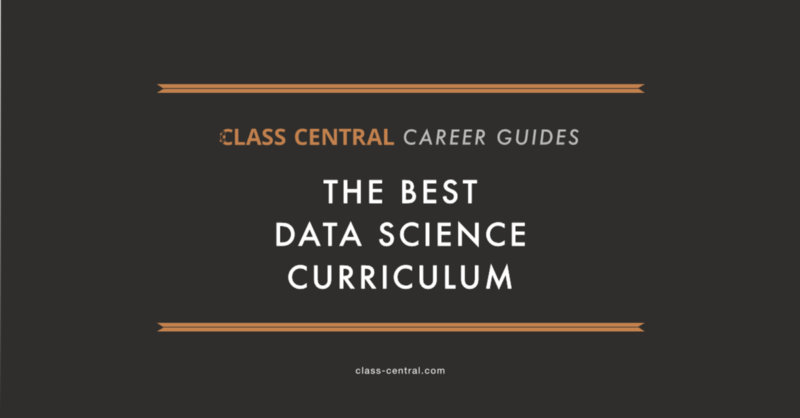
Though I enjoyed the majority of courses within the Nanodegree program (update: new courses have replaced the courses I didn’t enjoy), there are courses from other providers that receive better reviews for certain subjects. Statistics, for example. If I had access to my guide back when I started, I would consider the separate-course-for-each-subject route. Udacity’s student services and project review process, however, are so effective for learning that I would take the Data Analyst Nanodegree program regardless.
If you’re the kind of person who wants a 100% custom online education experience but wants to take advantage of Udacity’s projects and services, researching your favorite courses for each subject (I recommend using Class Central) then enrolling in the Nanodegree program to complete the projects is something to consider.
The alternatives
These are the five alternative programs that I was considering when I enrolled in the Data Analyst Nanodegree program:
- Johns Hopkins University’s Data Science Specialization on Coursera
- Microsoft’s Professional Program Certificate in Data Science on edX
- Wesleyan University’s Data Analysis and Interpretation Specialization on Coursera
- DataCamp’s Python and R tracks
- Dataquest’s Data Analyst and Data Scientist paths
Note: I have removed my comments on these programs due to Udacity policy regarding commenting on other providers.
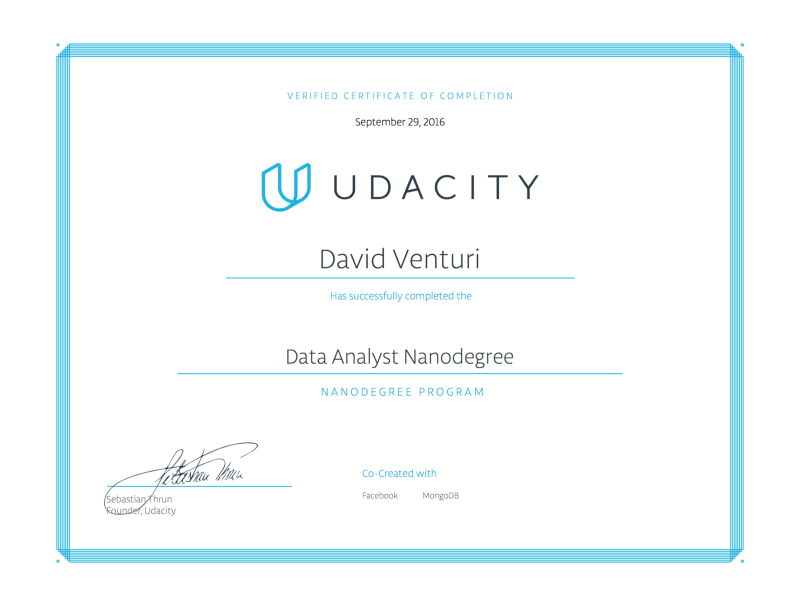
Conclusion
Udacity’s Data Analyst Nanodegree program gives you the foundational skills you need for a career in data science. Post-graduation, you’ll be able to target your strengths and weaknesses, and supplement your learning where necessary. Plus, you’ll leave with a handful of portfolio-ready projects.
I loved it, as did others.
★★★★¾
Subscribe to my newsletter
Read articles from freeCodeCamp directly inside your inbox. Subscribe to the newsletter, and don't miss out.
Written by

freeCodeCamp
freeCodeCamp
Learn to code. Build projects. Earn certifications—All for free.